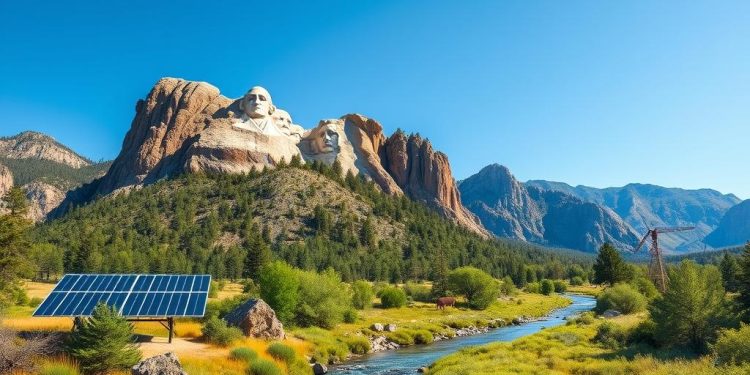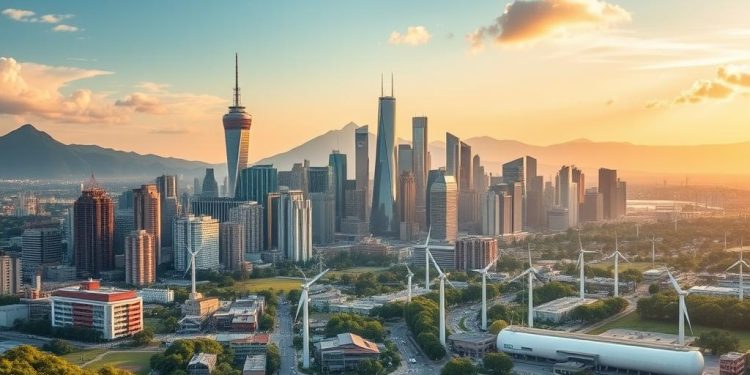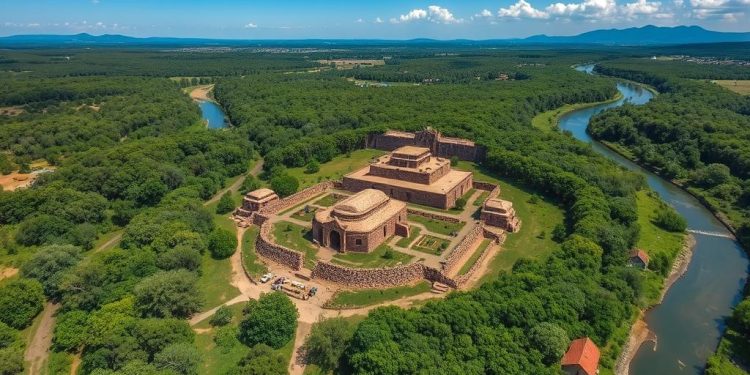The current landscape of transportation in the United States is on the brink of transformation, with high-speed rail (HSR) projects gaining momentum. This shift towards High-Speed Rail USA infrastructure is a vital step in enhancing urban mobility while promoting sustainable travel. By integrating high-speed rail into the public transit system, you could experience reduced traffic congestion and lower carbon emissions, offering a more efficient travel option compared to cars and planes.
Understanding the intricacies of these developments, from the 80% focus on upgraded shared-use lines to the ambitious goals of dedicated high-speed projects, is crucial for navigating the future of U.S. transportation. As rail development progresses, the importance of transportation innovation becomes clearer, emphasizing a shift toward faster, cleaner, and more sustainable transit solutions.
The Importance of High-Speed Rail in America
High-speed rail (HSR) serves as a critical component in advancing a sustainable travel framework across the United States. It offers an eco-friendly alternative to traditional transportation methods, addressing the urgent need for reduced emissions and efficient urban mobility. Emphasizing transportation innovation, HSR provides a chance to transform how Americans travel between cities.
Sustainable travel and reduced emissions
Switching to high-speed rail can significantly diminish greenhouse gas emissions. The transportation sector accounts for roughly 20 percent of U.S. greenhouse gas emissions, primarily from automobiles and airplanes. A pivotal example lies in the shift from air travel to rail for long distances, which can cut carbon dioxide emissions by about 50%. Furthermore, a national high-speed rail system running on 100% renewable energy represents a substantial step toward achieving net zero emissions by 2050.
Enhanced urban mobility options
High-speed rail enhances urban mobility by connecting cities more efficiently. This integration can alleviate congestion on highways and at airports. Major metropolitan regions suffer from epic congestion, costing the U.S. approximately $124 billion annually in wasted time and fuel. As HSR expands, you can expect increased accessibility and improved connections, ultimately leading to economic growth and greater commuting options. National investments in rail infrastructure, such as those highlighted by the Bipartisan Infrastructure Law’s allocation of $66 billion to rail transportation, demonstrate commitment to this transportation innovation.
| Benefit | Description | Impact |
|---|---|---|
| Reduced Emissions | High-speed rail can decrease carbon emissions by 50% when replacing air travel. | Helps combat climate change and improves air quality. |
| Traffic Alleviation | Efficient rail service eases highway and airport congestion. | Saves $124 billion in wasted time and fuel annually. |
| Job Creation | National HSR network could generate millions of jobs in manufacturing and construction. | Boosts local economies and strengthens communities. |
| Accessibility | Expanded rail options enhance travel for urban populations. | Increases access to housing markets and job opportunities. |
Current High-Speed Rail Projects in the U.S.
High-speed rail development is gaining significant traction across the United States. Major projects like the California High-Speed Rail, Brightline, and Texas Central Railway outline the future of transportation in the country. Each of these initiatives aims to revolutionize travel in their respective regions while fostering sustainability and economic growth.
California High-Speed Rail overview
The California High-Speed Rail project is one of the most ambitious rail development efforts in the nation. Designed to connect key cities, it promises to shorten travel time between San Francisco and Los Angeles to approximately three hours. With construction currently underway in the Central Valley, the project anticipates starting passenger services by the year 2030. Although it received about $3 billion in federal grants, it currently faces a significant funding gap exceeding $100 billion, raising considerable concerns about its successful completion.
Brightline and its expansion plans in Florida
Brightline stands out as a vital private rail service, operating primarily between Miami and West Palm Beach. With a top speed of 125 mph on 20 miles of newly built track, it is expanding its reach toward Orlando. This project exemplifies a successful public-private partnership in rail development. Brightline West, another upcoming endeavor, aims to link the Las Vegas Valley with Rancho Cucamonga by 2028, supported by $3 billion in federal funding. The expansion is not only about increasing speed but also about reducing CO2 emissions by encouraging a shift from cars and planes to rail travel.
The Texas Central Railway’s ambitious goals
Texas Central Railway is working towards connecting Dallas and Houston with a Japanese Shinkansen-style train. This initiative promises to slash travel time to just 90 minutes. Although the project is promising, it faces hurdles such as rising costs and land rights challenges. The railway aims to set new benchmarks for high-speed travel in the U.S. that could enhance connectivity and stimulate local economies.
| Project | Current Status | Top Speed (mph) | Expected Completion |
|---|---|---|---|
| California High-Speed Rail | Under Construction | 200 | 2030 |
| Brightline | Operational; Expansion Ongoing | 125 | 2028 for Brightline West |
| Texas Central Railway | In Development | 205 | 2028 (Tentative) |
With ongoing projects like the California High-Speed Rail, Brightline, and Texas Central Railway, the future of rail travel in the U.S. looks promising. Each project serves as a critical component in enhancing connectivity and reducing environmental impact, showcasing the potential of high-speed rail development across the country.
High-Speed Rail USA: Opportunities and Challenges
High-speed rail in the United States presents both opportunities and challenges as it seeks to revolutionize transportation alternatives. Funding hurdles pose significant barriers, particularly as projects face potential cost overruns and political shifts that may derail plans. Addressing these hurdles requires innovative financing models, especially public-private partnerships, to ensure necessary capital is secured for infrastructure upgrades.
Funding hurdles and innovative financing models
The financial landscape for high-speed rail is complex. Various projects, such as California’s high-speed rail, require massive funding, with two-thirds of its projected $128 billion still needing to be secured. These funding hurdles often stem from political changes that can result in budget cuts or shifts in priorities. Yet, opportunities lie in leveraging innovative financing models. For instance, federal grants and loans can enhance funding, but they may not cover all necessities. By involving private sectors, projects can gain additional funding and resources while sharing risks associated with project execution.
Political stability and project execution
Political stability plays a crucial role in the successful rollout of high-speed rail initiatives. Uncertainties in leadership often translate to indecisive direction, which can slow progress. AECOM’s report indicates that projects might stall or be delayed due to political shifts or rising material costs. Maintaining steady support across political lines is essential for navigating the complexities of these infrastructure projects. As seen with the Texas Central Railway, a stable political environment can significantly streamline project execution, bringing transportation innovation closer to realization.
Technological Innovations Driving Rail Development
Technological innovations are shaping the future of rail development, paving the way for sustainable and efficient transportation systems. By integrating energy-efficient designs and advanced machinery, the rail industry can significantly reduce its carbon footprint. These advancements not only align with global sustainability goals but also enhance the overall travel experience.
Energy-efficient designs and low-carbon materials
Energy-efficient designs are essential for the modern rail system, helping to minimize energy consumption and reduce greenhouse gas emissions. The adoption of low-carbon materials in rail infrastructure showcases a commitment to sustainability. These innovations offer long-lasting benefits, including cost savings and improved environmental performance, making rail travel a more appealing choice for the future.
Modular construction methods and advanced machinery
When exploring advancements in rail development, modular construction methods stand out. These techniques allow for more efficient building processes, shortening project timelines and reducing overall costs. In conjunction, the use of advanced machinery in construction projects can streamline operations, ensuring quality and safety standards are met while minimizing delays.
Examples of global innovations in rail systems
Many countries are leading the way in applying technological innovations to their rail systems. For instance, Japan’s Shinkansen trains exemplify the integration of energy-efficient designs with cutting-edge technology, while France’s TGV showcases speed and comfort. These examples provide valuable insights for the U.S. rail industry as it aims to modernize and improve its infrastructure.
| Innovation | Description | Benefits |
|---|---|---|
| Energy-efficient Designs | Innovative architecture and engineering that reduce energy use. | Lower emissions, cost savings, and enhanced passenger comfort. |
| Low-carbon Materials | Use of sustainable materials in construction. | Reduced carbon footprint and improved sustainability. |
| Modular Construction | Prefabricated components for faster assembly. | Shortened project timelines and lower labor costs. |
| Advanced Machinery | State-of-the-art equipment for construction and maintenance. | Increased efficiency and safety in operations. |
Public Perception and Future of Rail Travel
Public perception regarding rail travel is shifting, particularly as younger generations show increasing interest in sustainable transportation. This demographic tends to favor environmentally friendly travel options, which is where high-speed rail fits in perfectly. The COVID-19 pandemic significantly impacted train ridership, with Amtrak reporting a staggering 90 percent decline in passengers. Despite this decline, the future of transport remains bright, as evolving attitudes towards rail travel may favor its resurgence.
Changing attitudes towards train travel among younger generations
The younger population is more aware of climate change and seeks alternative modes of transport that minimize their carbon footprint. High-speed rail projects can cater to this need by offering a sustainable option for intercity travel. Trains are increasingly viewed as a viable alternative to flying, especially for shorter routes. This is leading to a growing excitement around new rail innovations and construction methods, making the future of rail travel in the United States quite promising.
The impact of the COVID-19 pandemic on ridership
The COVID-19 pandemic has forced many travelers to reassess their choices, with safety protocols now a top priority. As those measures become more established, rail travel may benefit from a resurgence. The pandemic has prompted experts to predict a lasting impact on transportation trends, affecting even global air travel growth projections. Rail systems, like the Acela Express, have demonstrated resilience by adapting to current challenges while maintaining the potential for improved ridership in the years to come.
Infrastructure Upgrades Necessary for High-Speed Rail
To successfully implement high-speed rail systems, significant infrastructure upgrades are essential. The existing rail networks require modernization to withstand increased speeds and accommodate more passengers. This modernization not only involves upgrading tracks but also enhancing signaling systems and station facilities. Such investments are critical for the future of rail development in America.
The need for modernizing existing rail networks
The path forward involves a commitment to adapt current rail infrastructures to support advanced high-speed services. With over $66 billion allocated from the Bipartisan Infrastructure Law, the largest investment in rail since Amtrak’s inception, the momentum is building. This funding is aimed at major passenger rail projects across the country. Anticipated speeds of up to 220 mph for lines like the one connecting Los Angeles and San Francisco highlight the need for comprehensive upgrades.
Coping with land acquisition and property rights issues
Land acquisition poses a substantial challenge to advancing these infrastructure upgrades. When developing high-speed rail systems, particularly in urban areas, navigating property rights becomes crucial. Fair compensation practices and community engagement are vital strategies to address these issues. The potential hurdles associated with securing land can lead to delays, necessitating a proactive approach to streamline the process.
Ultimately, the integration of modern technology with efficient land acquisition strategies can pave the way for groundbreaking rail development, creating tens of thousands of good-paying jobs while reshaping the future of transportation.
Conclusion
The future of U.S. transportation is poised for significant transformation, heavily reliant on the successful development of high-speed rail networks. As environmental concerns escalate and urban traffic congestion becomes increasingly severe, high-speed rail offers an efficient and sustainable travel option that addresses these issues head-on. Initiatives such as the Brightline West project, aiming to connect Las Vegas to Los Angeles in time for the 2028 Summer Olympics, exemplify the ambitious plans to improve rail infrastructure and enhance mobility across the United States.
While the road ahead is not without obstacles—challenges related to funding, political stability, and public perception remain—there’s a growing acknowledgment of the benefits high-speed rail USA can bring. The potential for job creation and a significant reduction in carbon emissions highlights the importance of collaborative efforts between federal, state, and private sectors to implement these transformative projects. Optimistically, achieving an extensive high-speed rail network, proposed to be over 17,000 miles long, could revolutionize the way you travel and have an enduring impact on the future of transport in America.
Ultimately, the integration of advanced rail systems will not only enhance travel efficiency but also contribute substantially to sustainable travel practices, aligning with the nation’s goals of reducing greenhouse gas emissions. As we look to the future, the realization of these projects can redefine travel possibilities across the country, making high-speed rail an essential part of a modern, eco-friendly transportation landscape.










